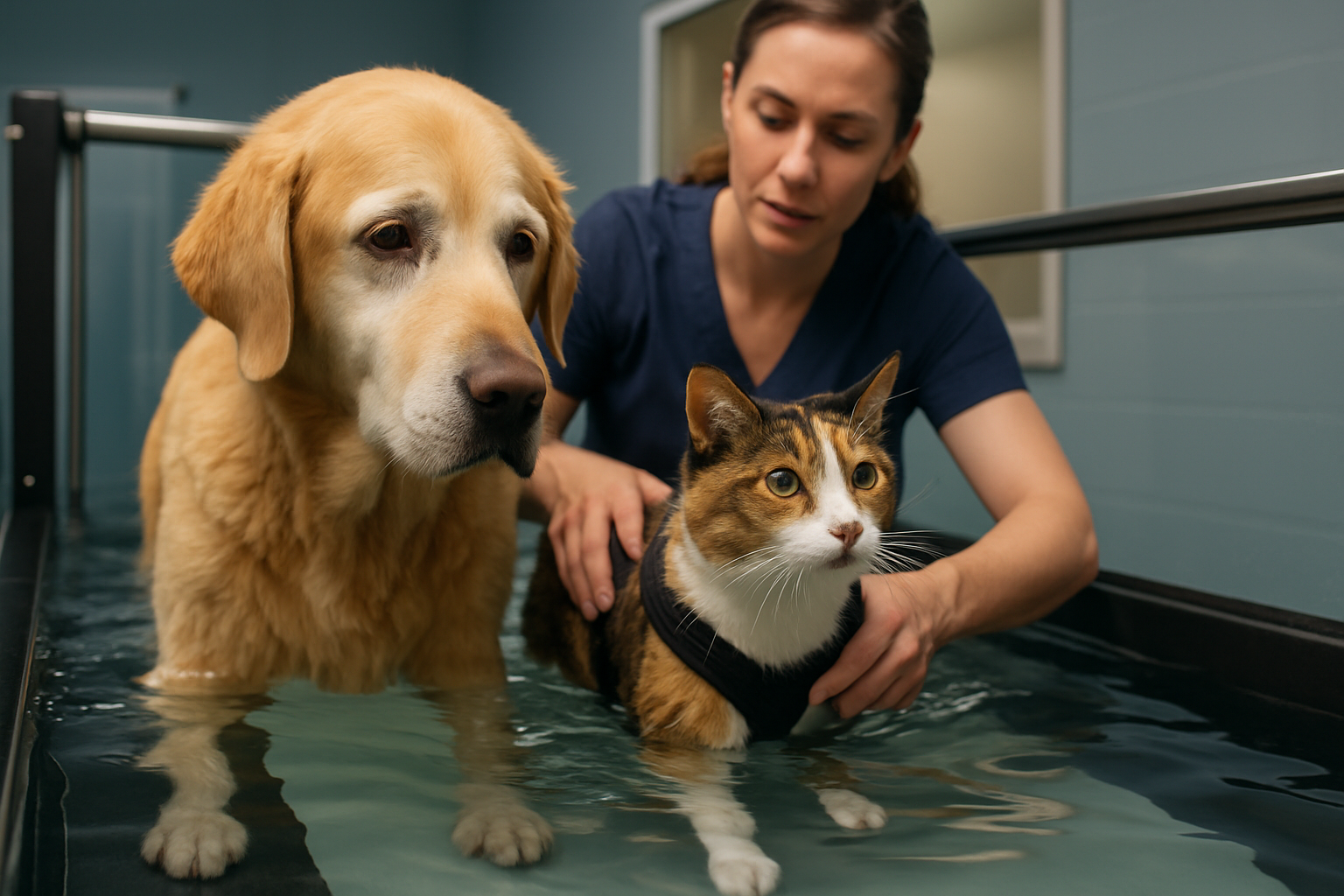Aquatic Therapy for Arthritic Pets: A Gentle Path to Mobility
Imagine a world where aging pets regain their youthful vigor, moving with ease despite the ravages of arthritis. This isn't a far-fetched dream, but a reality made possible through aquatic therapy. As pet owners seek innovative ways to improve their furry companions' quality of life, this water-based treatment is making waves in veterinary care, offering a beacon of hope for animals struggling with joint pain and mobility issues.

The modern era of aquatic therapy for companion animals began in the 1980s, as veterinarians started adapting human rehabilitation techniques for dogs and cats. Initially, the focus was on post-surgical recovery, but practitioners soon realized its potential for managing chronic conditions like arthritis.
The Science Behind the Splash
Aquatic therapy leverages the unique properties of water to create an ideal healing environment. The buoyancy of water reduces the impact of gravity, allowing arthritic pets to exercise without putting undue stress on their joints. This weightlessness can reduce pain and increase range of motion, enabling pets to perform movements that might be impossible on land.
Hydrostatic pressure, the force exerted by water on immersed objects, plays a crucial role in reducing joint swelling and improving circulation. This pressure acts like a gentle, full-body compression garment, helping to flush out inflammatory substances and deliver oxygen-rich blood to affected areas.
The resistance provided by water also helps strengthen muscles without the jarring impact of land-based exercises. This is particularly beneficial for pets with weakened muscles due to inactivity caused by arthritis pain.
Tailoring Treatments: From Poodles to Parrots
While dogs are the most common beneficiaries of aquatic therapy, the treatment is not limited to canines. Cats, rabbits, and even birds have found relief through carefully tailored water-based exercises. Each species and individual animal requires a unique approach, considering factors such as natural affinity for water, size, and specific health concerns.
For dogs, therapy often takes place in specially designed pools or underwater treadmills. Sessions may include supervised swimming, fetching toys in water, or walking against the current. Cats, typically less enthusiastic about water, might start with shallow wade pools and gradually progress to more immersive exercises.
Exotic pets present unique challenges and opportunities. Arthritic rabbits may benefit from gentle floating sessions, while parrots with joint issues might enjoy supervised splashing in shallow, warm water. The key is to work closely with a veterinarian experienced in exotic pet care to develop a safe and effective treatment plan.
Beyond Arthritis: Expanding Horizons of Aquatic Healing
While arthritis relief remains a primary focus, veterinarians are discovering additional applications for aquatic therapy. Neurological conditions, such as intervertebral disc disease and degenerative myelopathy, have shown promising responses to water-based treatments. The supportive environment allows pets with impaired coordination to practice movements safely, potentially speeding up recovery and improving long-term outcomes.
Weight management is another area where aquatic therapy shines. Overweight pets, who may struggle with traditional exercise due to joint stress, can burn calories and build muscle in the pool without risking injury. This dual benefit of weight loss and improved mobility can create a positive cycle, further enhancing the pet’s overall health and quality of life.
The Ripple Effect: Impact on Pet Care Industry
The growing popularity of aquatic therapy for pets has sparked a mini-revolution in the animal care industry. Specialized rehabilitation centers featuring state-of-the-art hydrotherapy equipment are popping up across the country. These facilities often combine aquatic therapy with other modalities like acupuncture, massage, and laser therapy for a holistic approach to pet wellness.
The market for at-home aquatic therapy products is also expanding. Inflatable pools designed for canine hydrotherapy, ranging from $200 to $1000, allow pet owners to continue treatments between professional sessions. More advanced systems, like compact underwater treadmills for home use, can cost upwards of $5000 but offer a long-term investment in pet health for dedicated owners.
Navigating the Waters: Considerations and Precautions
While aquatic therapy offers numerous benefits, it’s not a one-size-fits-all solution. Pets with certain conditions, such as open wounds, respiratory issues, or severe heart problems, may not be suitable candidates. A thorough veterinary examination is essential before beginning any aquatic therapy program.
Water safety is paramount. Even natural swimmers like retrievers can tire quickly during therapy sessions, so constant supervision is crucial. For less water-confident pets, specially designed life jackets can provide both safety and peace of mind for owners.
Maintaining proper water quality is another critical factor. Therapy pools require careful monitoring and treatment to prevent the spread of infections and ensure a comfortable environment for healing.
The Future of Fluidity in Pet Care
As research in veterinary rehabilitation continues to evolve, aquatic therapy is poised to play an increasingly important role in pet healthcare. Ongoing studies are exploring its potential in areas such as cognitive stimulation for senior pets and anxiety reduction in rescue animals.
The integration of technology is set to revolutionize aquatic therapy further. Virtual reality systems that simulate natural environments could make sessions more engaging for pets, while advanced monitoring devices could provide real-time data on muscle activity and joint movement, allowing for more precise treatment protocols.
As pet owners become more attuned to their animals’ health needs, the demand for innovative, gentle therapies like aquatic rehabilitation is likely to grow. This rising tide of interest promises to bring new depths of healing to our beloved companions, ensuring that even our oldest and most arthritic pets can continue to make a splash in our lives.




